Gina Schock, Go-Go’s Drummer, Snares Readers With New Book of Photos and Memories
- Oops!Something went wrong.Please try again later.

Gina Schock is now two things that she was not a couple of weeks ago: a Rock and Roll Hall of Fame member, and a published author. “Made in Hollywood: All Access With the Go-Go’s,” a book of her photographs and recollections from roughly four decades with the most successful all-female band of all time, Go-Go’s, came out Friday, the day before the group was in Cleveland to rock out at an induction ceremony.
“Made in Hollywood” was initially conceived as strictly a coffee table photo book, before publishers talked her into making it about half-and-half photos vs. about 13,000 words of text (some of it coming in the form of mini-essays by friends like Jodie Foster, Paul Reubens, Martha Quinn, Kate Pierson and her bandmates). She calls the collection of photos “my precious little babies,” but saw the light about letting them have textual siblings. “Initially I said, ‘Let me think about it.’ Then I started looking at the photos and realized that every photograph tells, or brings up, a story.”
More from Variety
Schock has book events or photography exhibits coming up in the first half of November in New York City, L.A., San Francisco and Laguna Beach. (Read to the bottom for details.) Meanwhile, with her Hall induction looming, Schock got on the Zoom with Variety to discuss what working on the book brought up.
Of course there are photos of yourself as well as the ones you took of others. You went through some image changes in the early days of the Go-Go’s, and pre-Go-Go’s. Is there anything that you kind of laugh about?
Oh my God, everything makes me laugh. Obviously I have a pretty good sense of humor, and everything in this book has a touch of humor to it. In the early days, with my hair, that was kind of a bad Afro that I had, kind of — that was really pretty sad-looking, Then you see how I cut my hair off really short and dyed it black. An extreme makeover – and I was ready for it. And then we went thrift-store shopping for some good outfits for me. We were so poor we couldn’t afford to do it any other place. I mean, you could buy new underwear, but that’s about it. Everything else was used — including shoes and socks.
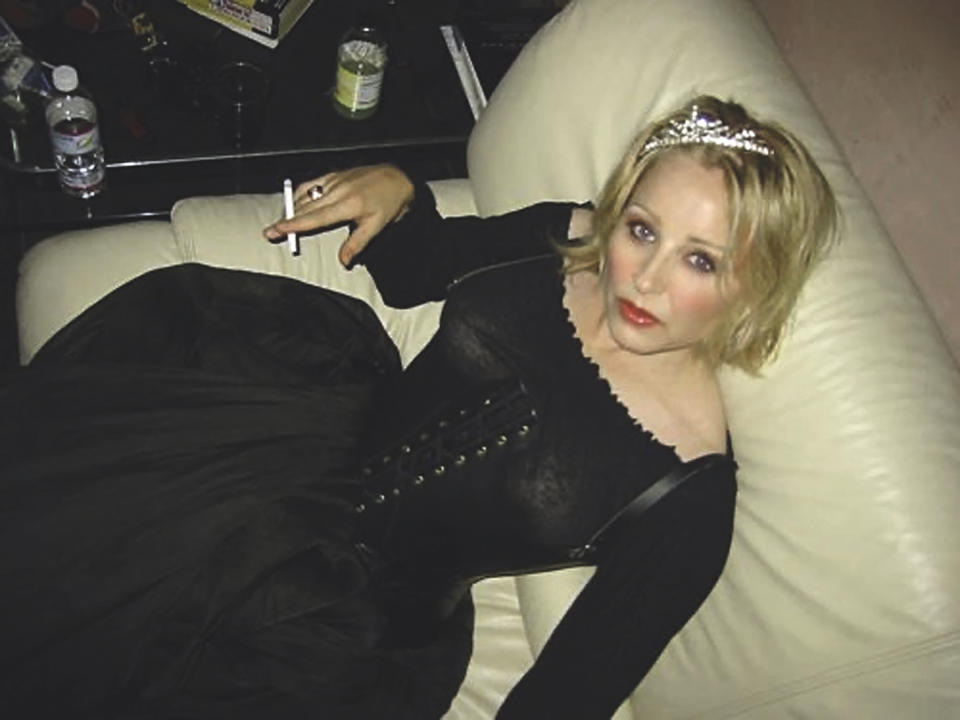
John Stapleton
You write about seeing Led Zeppelin and the Who as a pre-teen, and how transformative that was.
You bet. The first concert I went to in 1969, my brother took me, and that was Led Zeppelin, on their first American tour, opening for the Who. I was 11 going on 12. And after seeing those two bands, it did change my life. As an 11-year-old, I felt like I knew what I wanted to be for the rest of my life, and that was be up on that stage. Everything from there out was all about music. Every penny that I got was spent on tickets to see shows or on records or T-shirts of rock bands or magazines.
It’s striking because in 1969, probably a lot of boys going to that show are thinking they want to be Robert Plant or Roger Daltrey. But the idea that it just seemed natural to you that you want to be on stage… Were you thinking, “This is like a really unusual impulse for a girl my age, or any age, to be having?” There can’t have been too many other girls at school who were dreaming of being rock stars.
It’s funny, because you’ve got a point there. But I never thought any other way other than “Yeah, that’s what I’m gonna do. And I’ll figure out what instrument I want to play. I’ll set my sights on that and I will just work my ass off to make it happen.” Gender never entered the picture. And it has to do a lot with my parents and the way I was brought up, in that they firmly gifted me with the idea that I was capable of anything. I had faith in myself, and I knew they were my rock. They were very supportive of what I was doing, and it was something pretty heavy, for parents to let their kid go at the age of 21 across country when I knew three people in L.A. to start a new life out there, with everything I owned in my father’s pickup truck. And it’s crazy that it worked out.
It’s great that you had blinders on about what you faced. Was it encouraging, as the ‘70s progressed and there were handfuls of serious female rock musicians coming along? Was it gratifying to have some role models who were doing this thing you wanted to do?
It never entered my mind. I never thought about it. And everybody in the band will tell you the same thing: Nobody ever thought about that… never. It was just like, we’re all together and having a blast, doing what we love to do. We get to get up on stage and have all these people go crazy, applauding for us every night. And we were starting to make money at it, where we got to quit our day jobs and just live off of what we were doing for live shows, and they kept getting bigger and bigger and bigger, getting more money for each show. It started to really make sense, like, I think this is really gonna work.
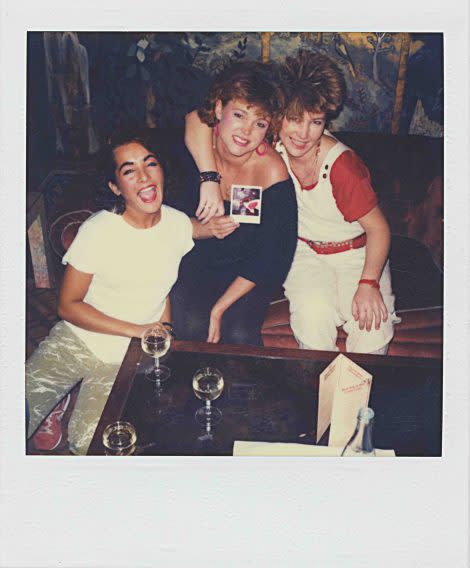
Courtesty Gina Schock
Do you have a favorite era of the Go-Go’s? Because in the book there is a lot of emphasis on the early Masque days. That might be more of a favorite time than when you then went on tour in England and Belinda was getting spit on. Maybe that’s not a high point.
But what an adventure that was. And it toughened us up. When we got back from England, we could handle anything, because it was tough. They were there to see Madness or the Specials, and they didn’t want to see five what they considered creampuffs from California. But we were just like, “Fuck them, we’re going to put on our show and rock out and do what we do.”
Funny that you mention “creampuffs from California.” People who just looked at the album covers, or just knew that you were based in L.A., have often been a little bit surprised when they hear you speak. You haven’t lost your Baltimore accent over the years, like lot of people who come to California from the east do. You still sound like where you’re from.
Well, I spent more than half my life on the west coast. But I was very, very close with my parents, and I was back constantly, as much as I could get back. Put it this way. AfterI left in 1979, I still never missed a Christmas at my parents’ house, and that was always a month. And then I’d go in the summertime for like five weeks. I think that’s why I didn’t lose my accent, maybe, because I spent a lot of time back in Baltimore. … I’m an east coast girl, I definitely am.
You cover a little bit in your book the time when things were starting to fall apart for the band. I still love your then-swan song, the “Talk Show” album, so much — but like the other members have, you make it sound like it was torture to get through, unlike the first two albums.
There’s always some drama going on in bands, let’s face it. It’s hard enough to be in a relationship with just two people. You can imagine dealing with bands, with four or five other people that you’re dealing with on a daily basis, trying to be creative together and to make room for everybody’s ideas, and a lot don’t work. And then that’s just when you’re together. Then you have all this personal stuff on the side happening that you’re trying to deal with, and a lot of times you bring it with you when you go to work. But fortunately, I feel like everyone really understood, in a very visceral way, that we had something very special, and we had to treat it with respect. Even when we broke up for those couple of years, I mean, the minute that we got a chance to get back in the same room together, it was on. The minute we did that show for Jane Fonda in 1990, then we set up a tour that year. Because when we play together, there’s this wonderful energy that happens only when the five of us are playing in the same room. And you can’t buy it. It’s not attainable anywhere else. And it’s a wonderful thing.
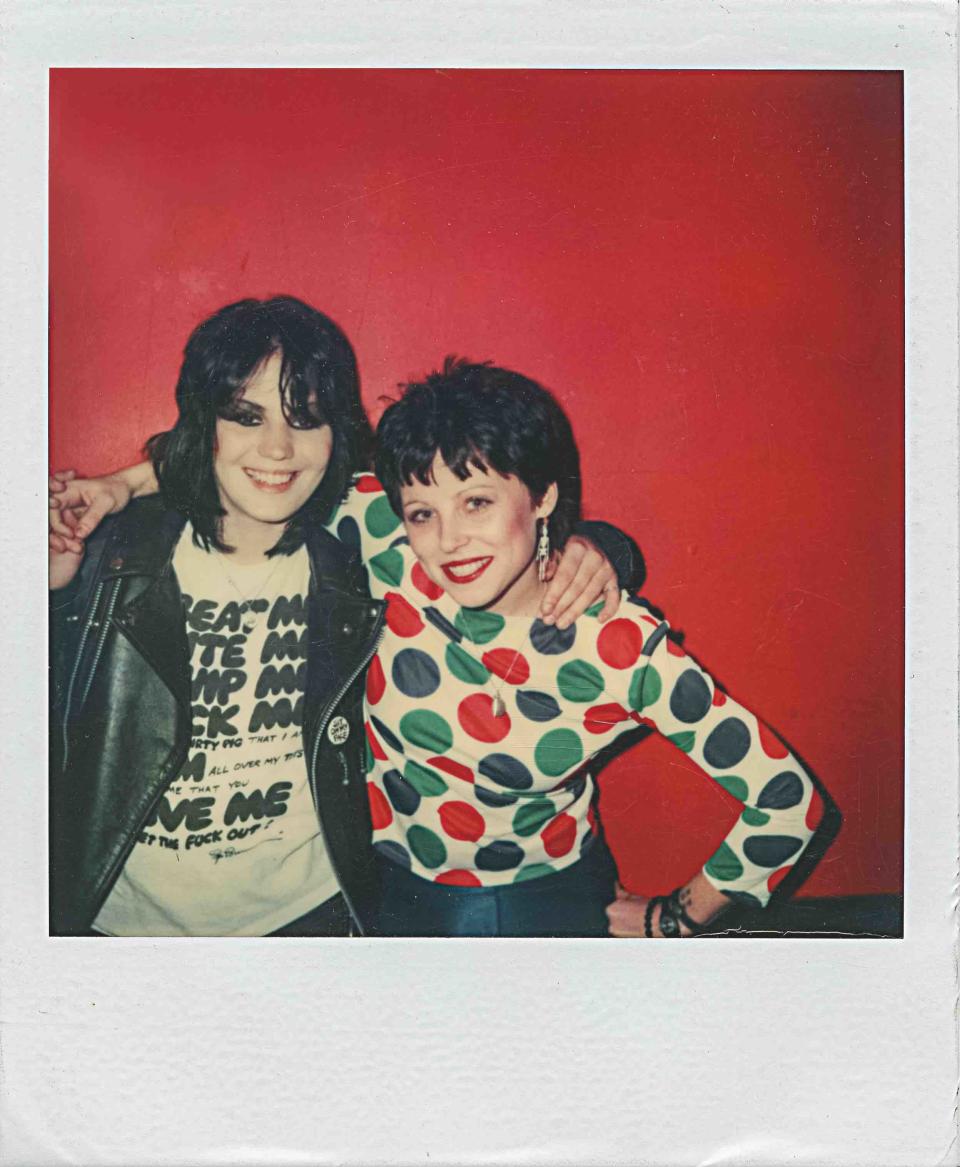
Courtesy Gina Schock
You mention, as others have in the past, that a lot of dispute in that first breakup had to do with songwriters being favored financially. And you say that somewhere in the more recent life of the band, that got resolved.
We changed it. Everything’s split equally now. But back then it wasn’t. If you read the book, I explain it: You could write songs from now till the day you’re gone, but if you don’t have a way to sell those songs or for the general public to hear them, it’s not gonna do you much good. You write something, but you’ve got to have a platform to sell ‘em on. The Go-Go’s were our platform. If it wasn’t the five of us doing what we did, none of those songs would have mattered. And vice versa— one needs the other. That’s why it should be split 50/50 with everybody. It doesn’t make any sense otherwise. In the end, let’s face it, that’s why most bands break up. I know there’s managers nowadays that won’t take a band unless they split the publishing, because they know the minute that any real money comes in, the band’s gonna break up, because everybody’s working their ass off to make something happen — and then somebody’s gonna make four or five times what one other person in the band makes? It’s not fair and not right.
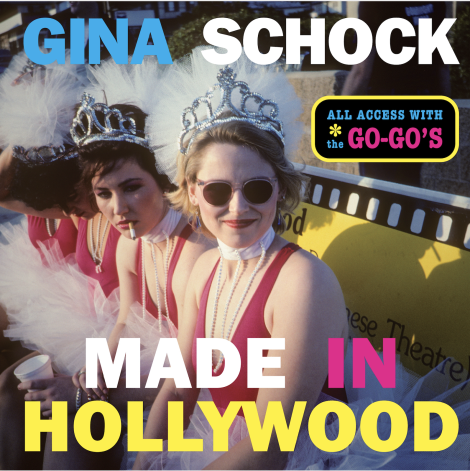
You talk in the book about how, before the band split for that period, there was a time where everybody really kind of came together in a personal way, when you were having your heart issue, and everyone went to Palm Springs before your operation.
It did bring everybody together for a little while there. Because the band was really splintering. When we did that third record, it was the height of our drug intake and the height of everybody had a lot of money by then, and people would just take off. It was a mess. But we did got through that record, and I think it sounds great. Yeah, it was a difficult time. Me getting sick like that, you know, I didn’t have a cold — I was having heart surgery, so it was a big deal. And I think everybody understood the gravity of our situation and dropped all the bullshit: “Let’s just be the great friends that we really are with each other, and drop the crap.”
Remembering the scare with your heart, was that something that was difficult at all to revisit, in writing the book?
No, because you know what? It was so outrageous that it’s something that feels like a bad movie that I was stuck in. It doesn’t seem real. Of course, I see that scar on my chest every day. But I don’t think about why it’s there. It just is. It’s part of who I am, and what I am. I think when things are just too painful for you to recall, your mind just pushes it out, so that it doesn’t have a negative effect on you that lingers with you.
Do you ever think objectively about what your personality is in the band, as far as how it’s distinct from the others and fills a need?
Well, I constantly have everybody laughing. I make people laugh a lot in this band. And I’m also, I think, the one that really… well… [Pauses.] I’m a true Virgo. I want to get things done, and I want to get them done in the right amount of time that we’re supposed to. I just want to keep things on track, I think, and never lose sight of how lucky I am and how lucky we are. That’s what I bring to the band, I guess.
In the documentary that came out last year (“The Go-Go’s,” which premiered at Sundance and ran on Showtime), it kind of zeroes in on the moment you came into the band as being like, “Okay. Here’s somebody who’s like a serious musician; we’ve got to get serious now.”
I did bring that, being a little bit more serious. But what they injected in me was: Hey, let’s have a little fun. And I needed that desperately, because I was way too serious about what I was doing. Everything had to be perfect, you know? And music’s not like that. Music’s all about soul and feel. And it’s not always perfection. Well, perfection is soul. So I loosened up a bit. And injecting the fun into this, I really needed that. So I welcomed it, and they welcomed what I had to offer. It was a good trade.
You asked a lot of people to write guest essays for the book… everyone from the other members to your first manager to Jodie Foster, who I wasn’t expecting to see in there.
Everybody I asked said, “Sure.” Nobody turned me down. It is funny that Jodie should be in there. We met her through Rob Lowe; he would come to our shows and we became friends. We were on our way to do the third album, on our way to the U.K., and we stopped in New York to do press. Rob showed up with Jodie, because she was going to Yale at that time. And we became friends, running around in New York, going to clubs, having fabulous meals together and living large. When we went over to England, he was doing a movie in France, and she would come hang out with us. We were young, had a lot of money, our careers were happening — it was really a wonderful time.
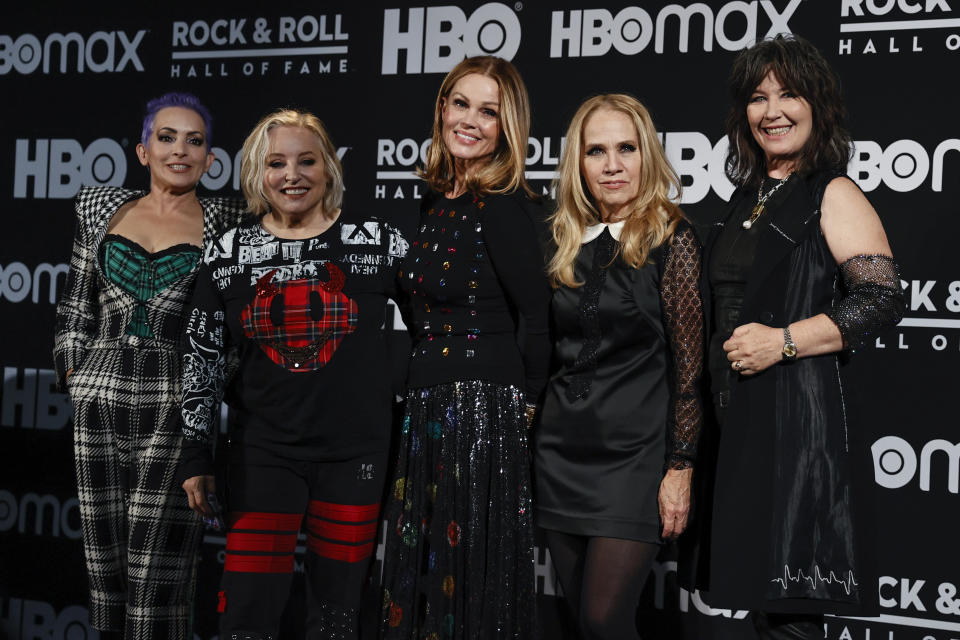
AP
When I interviewed the band members last year about not being in the Hall of Fame, everyone had different levels of dismay or wonderment about that, but you were maybe the most outspoken of the band in wondering what the hell was wrong here.
If I wasn’t in this band, I’d say we’re deserving of being inducted, honestly. So yes, it is about time. And we’re all pretty excited about it. … I think maybe they were getting pressured. People have been saying year after year, “Oh, next year,” and then it would come out and, no, we’re not even on the ballot. I think the documentary of course had a lot to do with creating a real awareness of the band. The Broadway thing might have started it off, and then to have the documentary out I think definitely kickstarted things again.
There’s a production of “Head Over Heels” (the musical comedy with an all-Go-Go’s song score) coming to the Pasadena Playhouse in November.
It still has legs. It’s gonna be around.
They’re transforming the Pasadena Playhouse for the show so it can be a dance party, for those who choose to partake, as well as have some traditional seating.
I spoke to the manager and he said they’ve pulled out all the damn seats! Yeah, it’s gonna be a crazy production. … I was never into Broadway musicals, but you know what? I get it now. The work that goes into it blows my mind. … That’s another wonderful thing that this band has afforded us. We get to have a goddamn musical on Broadway. We were a punk band! How’d this all happen? [Laughs.] What’s going on here?
Schock’s upcoming book events:
Nov. 5
Book Event, Harley in Laguna Beach
370 Glenneyre St, Laguna Beach, CA 92651
7-10 p.m. PT
Nov. 6
Art Exhibit, Mr Musichead in Hollywood
In conversation with Alison Brower (The Insider) and fellow Go-Go, Kathy Valentine
7420 Sunset Blvd, Los Angeles, CA 90046
2-4 p.m. PT (ticketed event)
Nov. 13
Art Exhibit, St. Joseph’s Art Society in San Francisco
In Conversation with Tony Bravo (SF Chronicle)
1401 Howard Street, San Francisco, CA 94103
6-9 p.m. PT
Followed by a performance by the Linda Lindas
Nov. 16
Book Event, Rizzoli Bookstore in New York City
1133 Broadway, New York, NY 10010
6 p.m. ET
Best of Variety
Sign up for Variety’s Newsletter. For the latest news, follow us on Facebook, Twitter, and Instagram.

